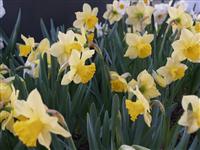
Learn to grow bulbs as a commercial cut flower crop!
Why not get your hands dirty and explore the possibilities of growing flowers as a career. This course is suitable for the beginner, as well as for the grower with some experience looking to advance their career.
Other opportunities include: